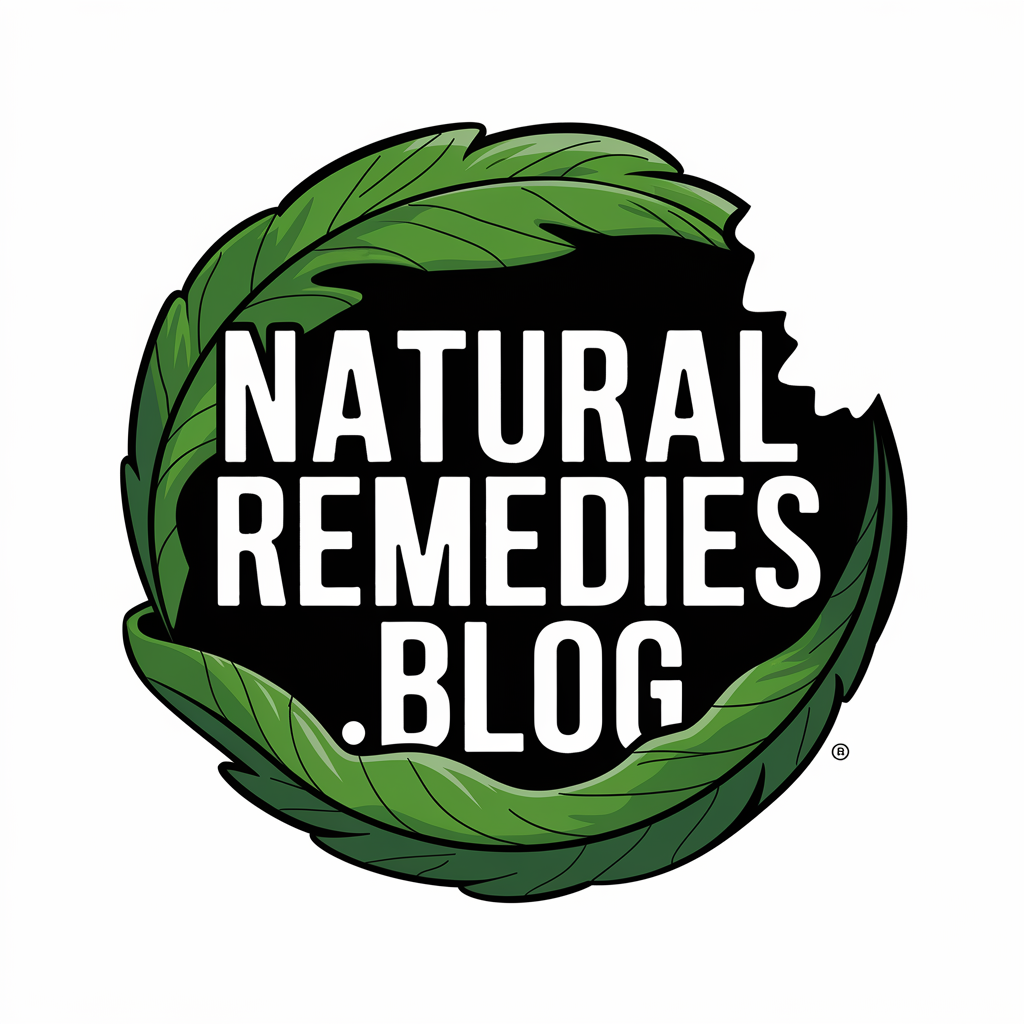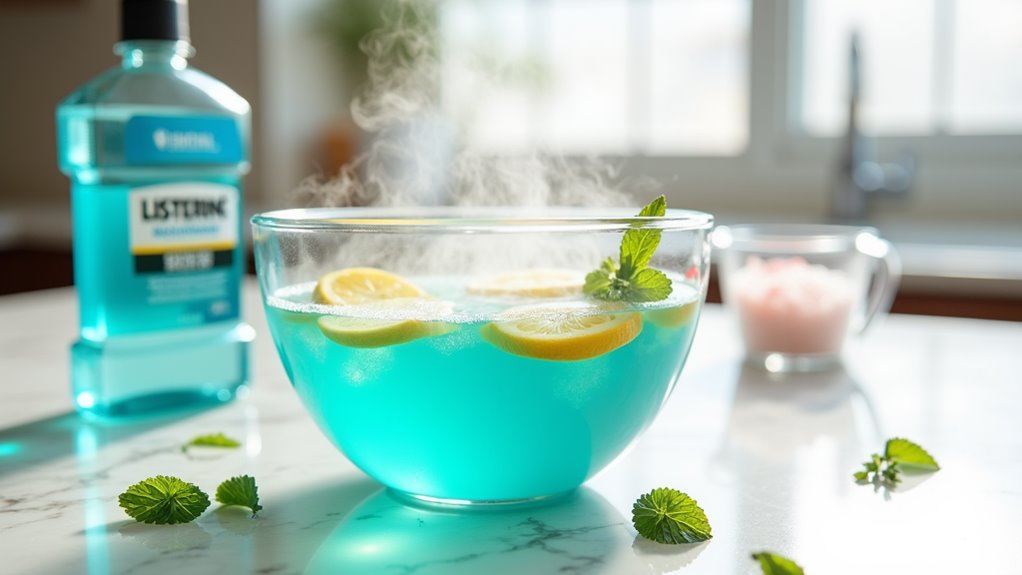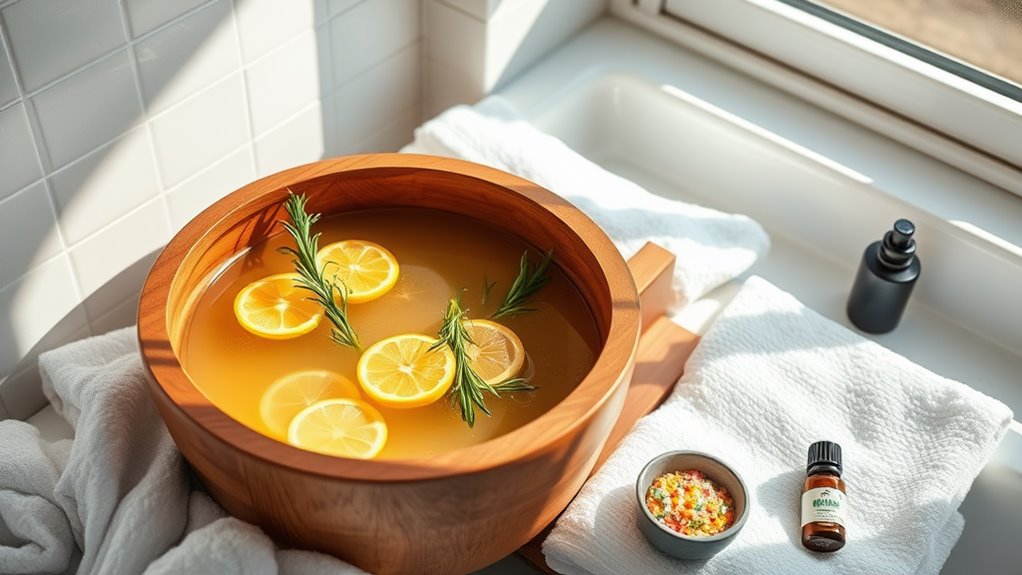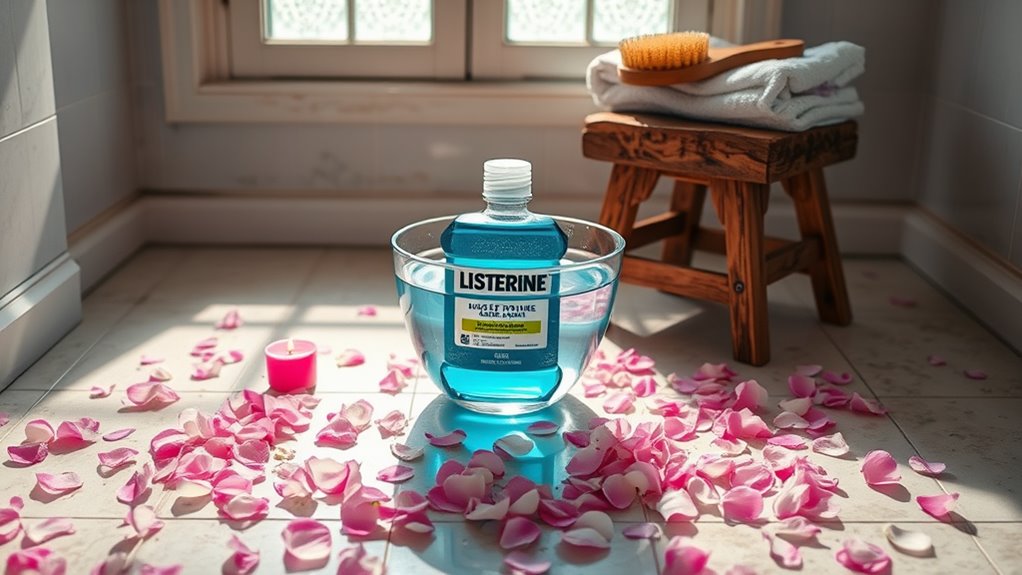Listerine Foot Soak Recipe That Will Change Your Life!
You’ll love this rejuvenating Listerine foot soak that transforms tired, achy feet into baby-soft bliss. Mix 1 cup of original blue Listerine, 1 cup white vinegar, and 2 cups warm water in a basin. Soak your feet for 20-30 minutes, then pat dry and moisturize. This powerful DIY treatment combats foot odor, softens calluses, and fights fungal infections. For best results and essential safety tips, there’s much more you’ll want to know.
Key Takeaways
-
Mix 1 cup of original blue Listerine, 1 cup white vinegar, and 2 cups warm water in a foot basin for the perfect soak.
-
Soak feet for 20-30 minutes to soften calluses, eliminate odor, and combat fungal infections naturally.
-
Add ½ cup of Epsom salt to enhance therapeutic benefits and provide extra relief for tired, achy feet.
-
Use this treatment 2-3 times weekly for best results, followed by thorough drying and moisturizing.
-
Regular soaks will transform your feet by reducing odor, softening rough patches, and improving toenail appearance.
What Is a Listerine Foot Soak?
A Listerine foot soak is a DIY foot treatment that combines Listerine mouthwash with warm water to create a therapeutic soak for your feet. This popular at-home remedy has gained traction among wellness enthusiasts who want an affordable way to pamper their feet and address common foot concerns.
The basic Listerine foot soak recipe typically includes original blue or green Listerine, which contains beneficial ingredients like menthol, thymol, and eucalyptol.
These compounds work together to refresh your feet, soften calluses, and leave your skin feeling invigorated. You’ll find that this simple yet effective treatment can help combat foot odor, reduce fungal issues, and provide a cooling sensation that’s especially welcome after a long day on your feet.
The Science Behind Listerine for Foot Care
The antimicrobial properties in Listerine mouthwash make it surprisingly effective for foot care.
When you soak your feet in Listerine, its active ingredients – thymol, eucalyptol,
Benefits of Using Listerine on Your Feet
Whether you’re dealing with foot odor or seeking softer skin, soaking your feet in Listerine offers multiple therapeutic benefits. The antiseptic properties help eliminate bacteria that cause unpleasant smells, while the menthol provides a cooling sensation that soothes tired, achy feet.
You’ll love how Listerine’s active ingredients work to soften calluses and remove dead skin cells, revealing smoother, healthier-looking feet. The solution can also help combat fungal infections, including athlete’s foot, thanks to its antimicrobial components.
If you’re troubled by dry, cracked heels, regular Listerine soaks can help restore moisture and promote healing. Plus, you’ll join countless others who’ve discovered this affordable alternative to expensive foot care treatments, making it a smart addition to your self-care routine.
Essential Ingredients for Your Foot Soak
Making your own Listerine foot soak starts with gathering simple household items you probably already have.
You’ll need original blue Listerine mouthwash, which contains essential oils and bacteria-fighting ingredients. Warm water is essential, as it helps open your pores and soften tough skin. White vinegar, your third key ingredient, works alongside Listerine to tackle fungus and odor.
For the perfect spa-like experience, you’ll also want to have these items ready: a large basin or foot tub that’s deep enough to cover your ankles, a soft towel for drying, and a timer to track your soaking duration.
Many foot care enthusiasts also add Epsom salt to enhance the soak’s therapeutic benefits and help draw out toxins.
[DIRECTIONS]:
Step-by-Step Recipe Guide
Following these simple steps will guarantee your Listerine foot soak gives you the best possible results.
Fill a basin or tub with warm water until it’s deep enough to cover your ankles. Add 1/2 cup of original Listerine, 1/2 cup of white vinegar, and 1 cup of warm water to create the perfect mixture. You can add 2-3 drops of tea tree oil for extra antimicrobial benefits.
Soak your feet for 20-30 minutes while you relax with a book or your favorite show. You’ll start feeling the tingling sensation as the solution works its magic.
Once you’re done, dry your feet thoroughly and apply moisturizer. For best results, use this soak 2-3 times per week. You’ll join countless others who’ve discovered softer, fresher-feeling feet through this trusted remedy.
Perfect Water Temperature and Timing
To achieve the most effective foot soak, you’ll need to monitor both water temperature and timing carefully. The ideal water temperature should be between 95-100°F (35-38°C), warm enough to be comfortable but not scalding. You can test it with your elbow, just like checking a baby’s bath water.
For best results, soak your feet for 15-20 minutes. Don’t exceed this timeframe, as prolonged exposure can dry out your skin. If the water starts feeling cool before the time is up, you can add a bit of warm water to maintain the temperature.
Many foot care enthusiasts find that evening soaks work best, as they help you unwind and allow time for your feet to fully dry before bed.
Best Time of Day for Your Foot Soak
While many people assume morning is the best time for a foot soak, evening treatments between 7-9 PM offer the most benefits.
After a long day of walking, standing, or working, your feet need relief, and this timing allows you to fully unwind before bedtime.
You’ll join countless others who’ve discovered that evening soaks help release accumulated tension and promote better sleep.
Your body temperature naturally drops in the evening, making it the perfect time to enjoy a warm foot bath.
Plus, you won’t have to rush through the experience like you might during morning hours.
If you can’t manage an evening soak, aim for any time when you can dedicate 15-20 minutes to truly relax and pamper your feet without interruption.
Common Foot Issues This Soak Addresses
Listerine foot soaks effectively combat numerous common foot problems that plague many people daily.
You’ll find relief from stubborn athlete’s foot, as the antiseptic properties help eliminate fungal infections that cause itching and burning between your toes.
If you’re struggling with foot odor, this soak will help neutralize bacteria causing those unpleasant smells.
The solution also softens calluses and corns, making them easier to remove.
For those dealing with toenail fungus, regular soaks can help clear up discoloration and thickness.
You’ll notice improvement with dry, cracked heels as the soak’s ingredients help soften and smooth rough skin.
The antimicrobial benefits even help prevent future infections while promoting overall foot health.
Adding Extra Ingredients for Enhanced Results
Beyond the basic foot soak formula, you can amplify its therapeutic effects by incorporating additional ingredients.
Add a cup of Epsom salt to boost the soak’s ability to reduce inflammation and ease muscle tension. For extra antifungal power, include 4-5 drops of tea tree oil, which works alongside Listerine’s antiseptic properties to combat foot odor and fungal infections.
If you’re looking to soften calluses, mix in 1/2 cup of white vinegar.
For a spa-like experience that’ll leave your feet feeling refreshed, try adding fresh mint leaves or a few drops of peppermint essential oil.
You can also incorporate 2 tablespoons of baking soda to help neutralize odors and create a more balanced pH level for your feet.
Safety Precautions and Warnings
Although Listerine foot soaks are generally safe, you shouldn’t use them if you have open wounds, cuts, or severe skin conditions on your feet.
If you’re diabetic or have circulation problems, consult your doctor before trying this treatment, as your feet may be more sensitive to temperature changes and chemicals.
Don’t soak your feet longer than 45 minutes, as extended exposure can dry out your skin.
If you experience any burning, redness, or irritation, stop the treatment immediately and rinse your feet thoroughly with cool water.
Keep the solution away from children and pets, and never reuse the foot soak mixture.
Remember to moisturize your feet after the soak to prevent over-drying, and wait at least 48 hours between treatments to avoid skin sensitivity.
How Often to Use the Foot Soak
When using Listerine foot soaks as part of your foot care routine, it’s best to start with once per week and adjust based on your skin’s response.
Pay attention to how your feet feel after each treatment – if you notice any irritation or dryness, reduce the frequency.
For most people, using the foot soak 2-3 times per week is ideal for maintaining soft, healthy feet.
If you’re dealing with stubborn foot odor or fungal issues, you might benefit from daily soaks for up to a week, then reduce to maintenance frequency.
During winter months or if you have naturally dry skin, you’ll want to limit your soaks and increase moisturizing afterward.
Remember to space out your treatments evenly throughout the week to give your skin time to recover between sessions.
What to Expect After Treatment
After completing a Listerine foot soak, you’ll notice your feet feel softer and more refreshed. You’ll experience several benefits in the days following your treatment, making you enthusiastic to share this remedy with friends and family.
| Timeline | Effect | Duration |
|———-|
Tips for Maximum Effectiveness
To get the most out of your Listerine foot soak, you’ll need to follow several essential practices that enhance its effectiveness.
First, always use warm water, as it helps open your pores and soften calluses. Set a timer for 20-30 minutes and don’t cut the soak short – consistency is key to seeing results.
Add 1 cup of Listerine per gallon of water to maintain the proper concentration. If you’re dealing with stubborn foot issues, try soaking twice weekly.
After each treatment, dry your feet thoroughly and apply moisturizer to lock in the benefits. You’ll also want to use a pumice stone while your skin is soft from the soak.
For best results, remove nail polish beforehand so the solution can penetrate your nails effectively.
Maintaining Foot Health Between Soaks
Between your Listerine foot soaks, maintaining proper foot hygiene is essential for lasting results. Keep your feet dry, especially between toes, and change your socks daily to prevent fungal growth.
You’ll want to trim your toenails straight across regularly and file any rough edges to avoid ingrown nails.
Moisturize your feet daily, but skip between the toes where moisture can promote infection. You’re also going to love how wearing breathable shoes and rotating them daily keeps your feet fresh.
Don’t forget to use antifungal powder in your shoes if you’re prone to sweating.
Give your feet a quick massage each night to boost circulation, and consider using a pumice stone twice weekly to prevent callus buildup.
These simple steps will complement your foot soak routine perfectly.
Storing Your Foot Soak Solution
While maintaining your foot care routine between soaks, you’ll want to properly store your Listerine foot soak solution.
Keep your mixture in an airtight container made of glass or BPA-free plastic, and store it in a cool, dark place away from direct sunlight. You’ll find the solution stays fresh for up to one week when stored correctly.
Don’t forget to label your container with the date you mixed the solution and its ingredients.
If you notice any changes in color, smell, or consistency, it’s time to make a fresh batch.
While some of our foot-soak friends like to make larger quantities, we recommend mixing only what you’ll use within a week to guarantee the most effective treatment and maintain the solution’s antiseptic properties.
Signs the Treatment Is Working
When you begin using the Listerine foot soak treatment regularly, you’ll notice several positive changes in your feet. The first sign of success is softer, smoother skin, especially around your heels and toes.
You’ll also experience less foot odor, as the antiseptic properties in Listerine combat bacteria that cause unpleasant smells.
Another promising indicator is the gradual disappearance of rough, calloused areas. Your feet will feel more refreshed and energized after each soak, and any mild fungal issues should start clearing up within a few treatments.
You might notice your toenails becoming healthier and clearer too. If you’re dealing with athlete’s foot symptoms, you’ll experience less itching and burning sensations as the treatment progresses.
Combining With Other Foot Care Practices
To maximize the benefits of your Listerine foot soak, you’ll want to integrate it with other essential foot care practices.
Start by exfoliating your feet with a pumice stone before the soak to remove dead skin. After your treatment, apply a rich moisturizer to lock in softness and prevent dryness.
Make foot care a regular part of your self-care routine by trimming your toenails properly, wearing breathable socks, and choosing comfortable, well-fitting shoes.
You can also enhance your foot soak experience by adding Epsom salts or essential oils for extra relaxation.
Don’t forget to massage your feet occasionally to improve circulation and reduce tension. These complementary practices will help maintain the results you’re getting from your Listerine soaks and keep your feet looking and feeling their best.
Troubleshooting Common Problems
Although Listerine foot soaks are generally safe and effective, you might encounter a few common issues during your treatment. If you notice skin irritation or redness, dilute the solution with more water or reduce soaking time.
When dealing with persistent dryness, apply moisturizer immediately after your soak. For those experiencing a tingling sensation that’s too intense, try using cool water instead of warm.
If you’re not seeing results, check that you’re using original Listerine rather than alcohol-free versions, and verify you’re soaking for at least 15 minutes.
Some people find the scent overwhelming – in this case, add a few drops of lavender oil or use less Listerine.
Remember that minor skin peeling is normal, but stop treatment if you develop any rashes or severe discomfort.
Frequently Asked Questions
Can I Use Generic Mouthwash Instead of Listerine for the Foot Soak?
You’ll want to stick with Listerine since its unique blend of essential oils and antiseptic ingredients works best for foot soaking. Generic mouthwash might not give you the same results.
Will Listerine Foot Soaks Stain My Toenails or Skin?
You won’t experience any staining of your toenails or skin from Listerine foot soaks. Like many of us have found, the blue color washes right off when you’re done soaking.
Can I Reuse the Foot Soak Solution for Multiple Treatments?
You shouldn’t reuse your foot soak solution, as it won’t be as effective and could harbor bacteria. For the best results and your health’s safety, mix a fresh solution each time.
Is It Safe to Use Listerine Foot Soak During Pregnancy?
While you’re pregnant, it’s best to check with your doctor before trying foot soaks. Some essential oils in Listerine might be too strong, and you’ll want to make certain it’s safe for you.
Can Diabetics Safely Use Listerine Foot Soaks?
If you have diabetes, you’ll need to check with your doctor first. While Listerine soaks can feel great, they might risk your sensitive feet and complicate foot care.







